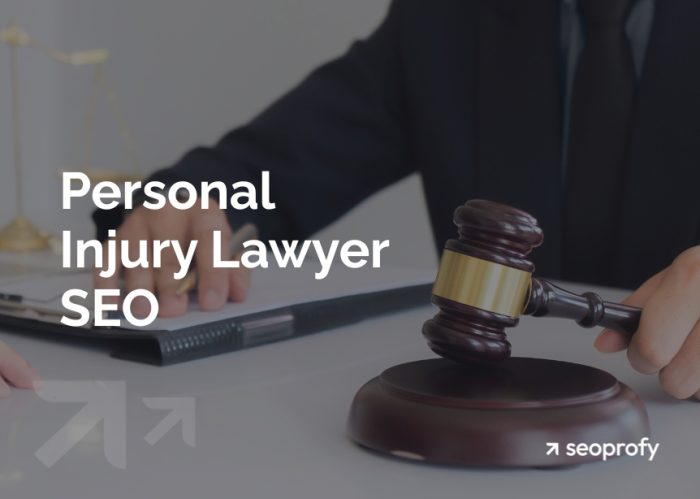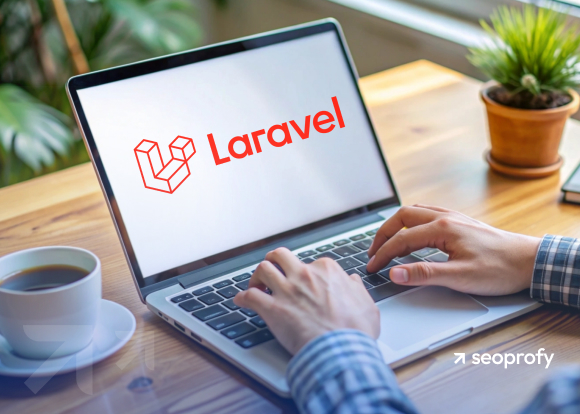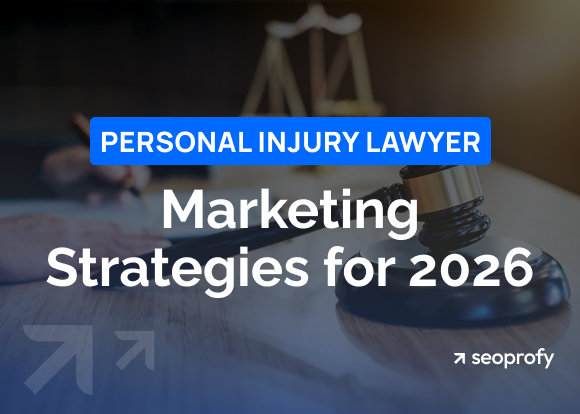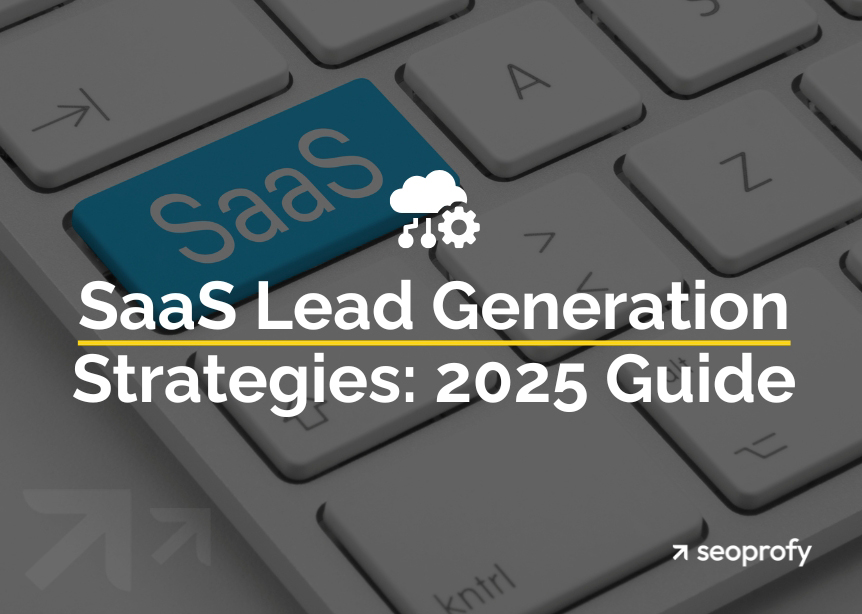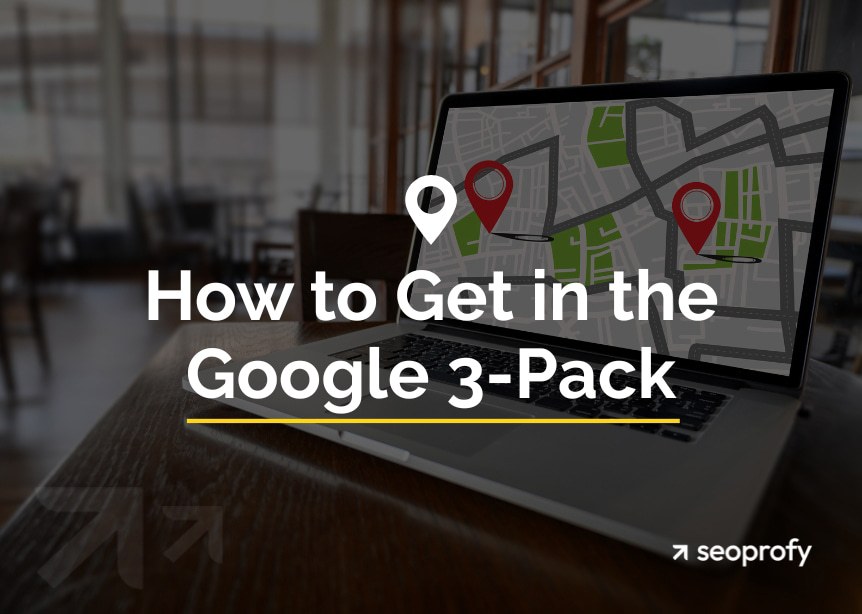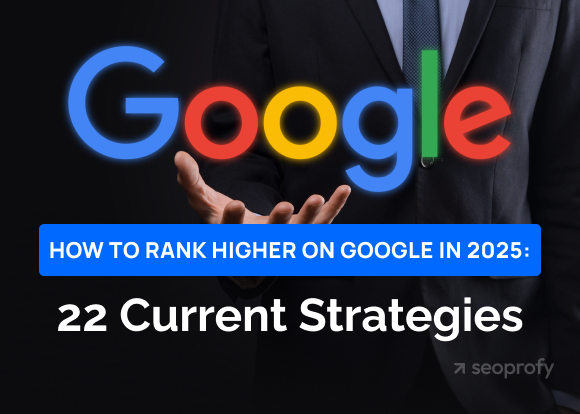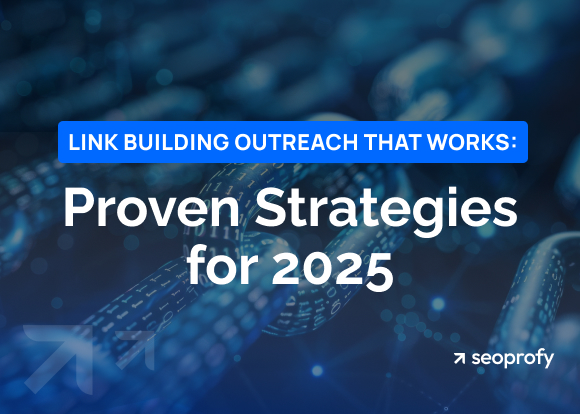When someone’s been injured, chances are they don’t have the time to scroll through directories. They search locally. And the firms that show up at the top of the results usually get the first call. Personal injury law firm SEO makes sure your name appears at the exact moment someone needs legal help.
We’ve seen firsthand how much impact that visibility can have. For one of our clients in the legal niche, we ran a full audit and rebuilt their SEO strategy as part of our personal injury lawyer SEO services. A few months later, traffic grew, but more importantly, so did the number of qualified calls.
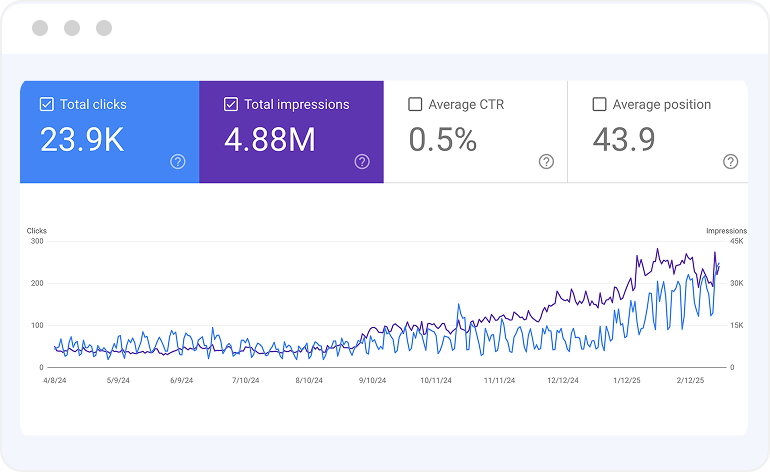
In this guide, you’ll find the same strategies we used to get those results. You’ll learn how to rank for relevant local searches, strengthen your authority, and bring in more case leads, without depending on ads or referrals. Let’s get into it.
- SEO helps personal injury law firms build a consistent flow of leads across search channels.
- Search demand and competition can vary widely by city, so each strategy for lawyer SEO needs to reflect the reality of the local market.
- Firms that appear in both the map pack and organic listings are more likely to receive calls from potential clients.
- Law practices that rank in Google’s local pack see a 113 percent increase in clicks, which makes local optimization a core part of the legal industry.
- Backlinks from trusted legal and local sources remain one of the most reliable ways to strengthen keyword rankings.
What is Personal Injury Lawyer SEO?
Personal injury lawyer SEO is the process of ranking your law firm for high-intent legal searches in your local area. By ranking, we mean showing up in local map packs, organic listings, and AI overviews, all of which influence who gets the first call.
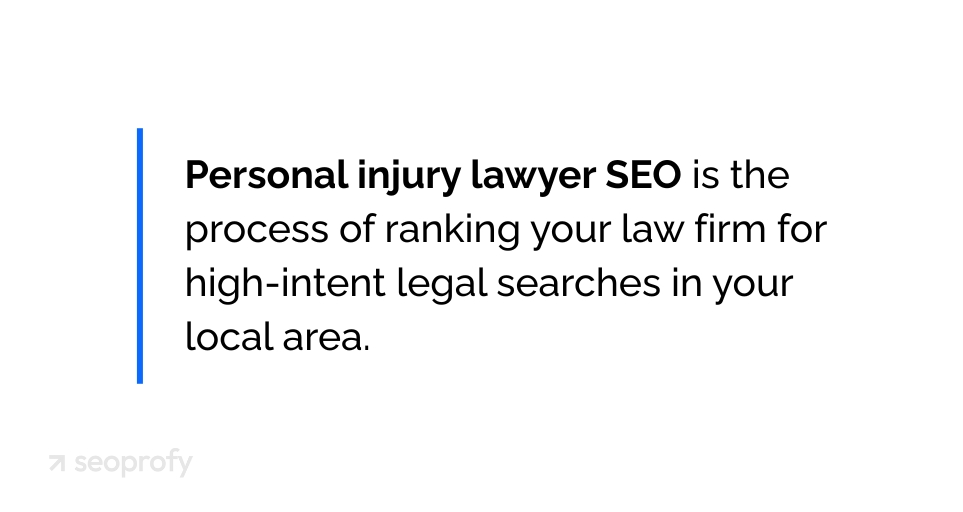
Why Does SEO for Personal Injury Lawyers Matter?
Research shows that for 65% of firms, their site delivers the highest ROI out of all marketing efforts. And that kind of return doesn’t happen by accident. It’s the result of SEO, which helps personal injury law firms keep a steady flow of leads coming in.
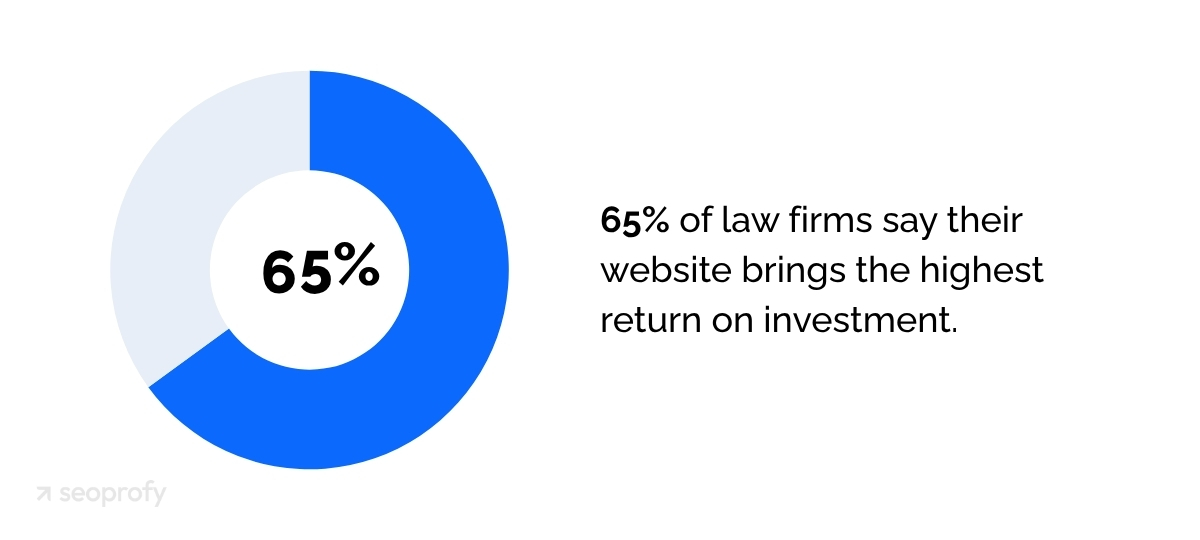
Referrals, ads, and word-of-mouth can still work, but they tend to fluctuate. One week you’re fully booked, the next it’s quiet. SEO for lawyers gives you more control and supports your growth in three specific ways:
1. It Increases Your Visibility for High-Value Local Searches
When potential clients type a term like “bike accident lawyer California“, the first thing they see is a map with three businesses featured at the top. Law firms that rank in this prime spot are more likely to win the case. And if you appear in both the map pack and organic results, you double your visibility.
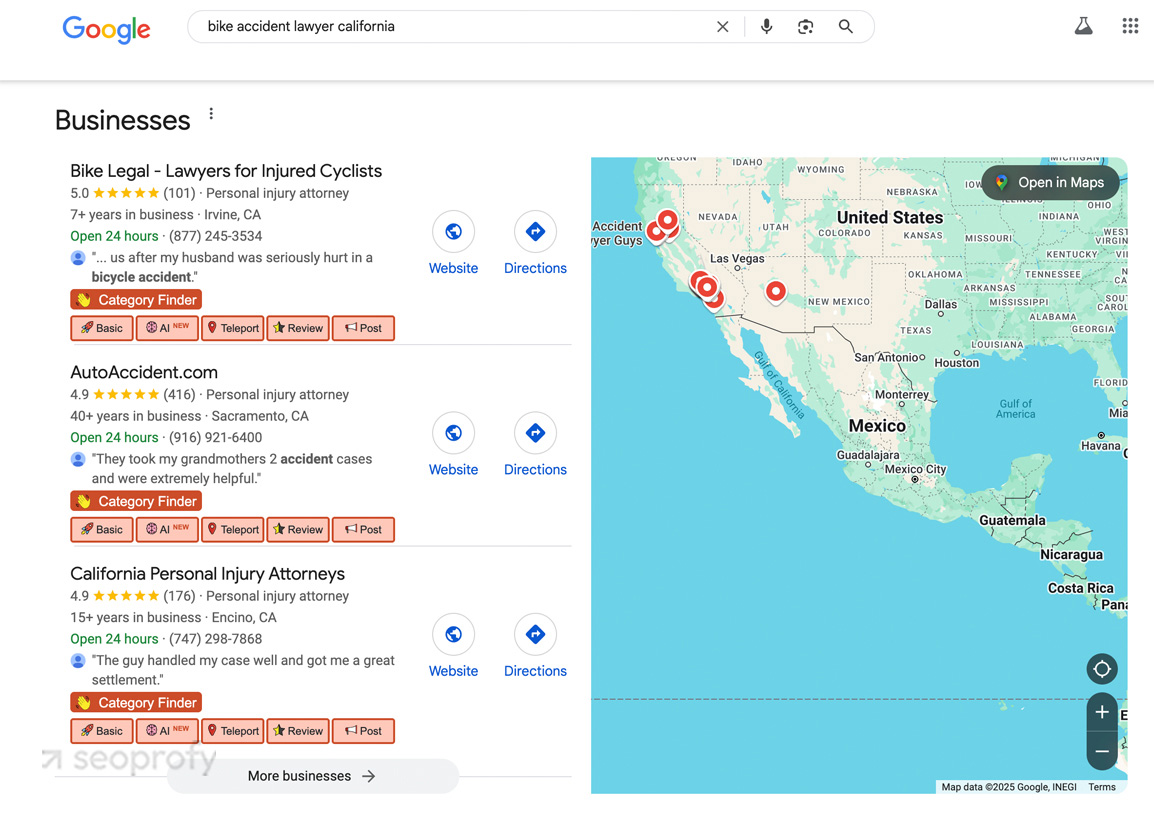
2. It Brings In a Steady Flow of Qualified Leads Over Time
SEO for personal injury involves optimizing your existing website and building pages around your services and the locations you serve. These pages target the exact personal injury keywords your potential clients use.
Once those pages are written and properly optimized, they continue to bring in new leads over time and help you grow a law firm sustainably. In contrast to ads, they don’t go offline after a week or disappear when the budget runs out.
3. It Builds Trust with Potential Clients Before They Contact You
In the legal niche, trust is important. Before someone picks up the phone, they do their research. They check your reviews, look at where you’re based, and scan your site to see if you’ve handled similar cases. In fact, 76% of legal clients say they’d leave a website if it didn’t provide them enough information.
SEO directly influences what people see when they find you online. It makes sure your Google Business Profile is complete, your reviews are visible, and the content they land on speaks to their needs. Additionally, it helps you create pages that answer the common questions your audience has, which shows that you understand their situation.
SEO vs SEM for Personal Injury Lawyers
Both SEO and SEM put your personal injury website in front of people who are searching for legal help. However, the outcomes you get from these strategies aren’t the same. Here’s how they compare:
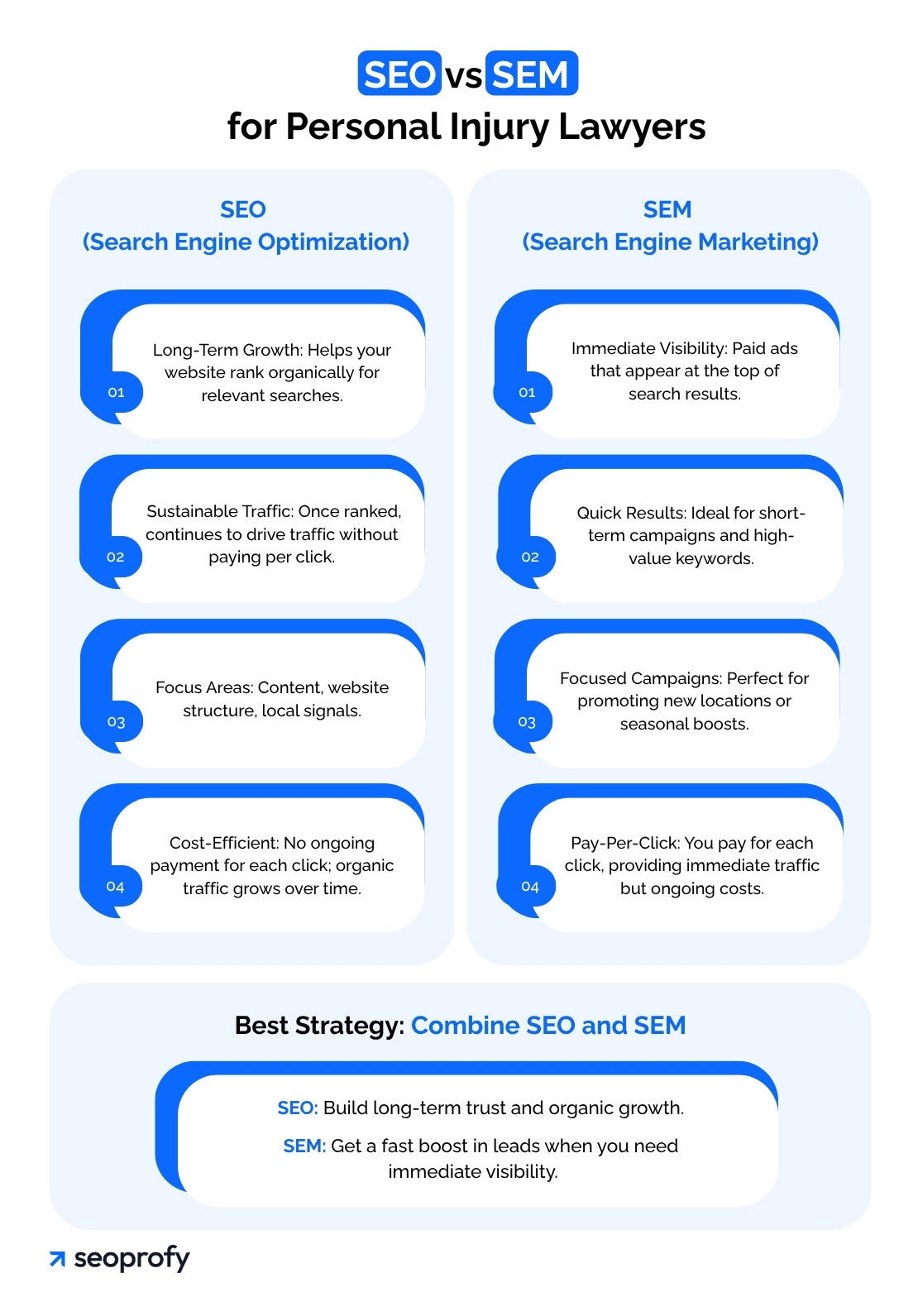
SEO is built for long-term growth. It helps your site show up in organic results when someone types a question, searches for a lawyer in their city, or wants to understand their legal options. You invest time in content, structure, and local signals. Once your pages rank, they keep bringing in traffic without paying for each click.
SEM (like Google Ads) gives you immediate visibility. You pay to show up at the top of the page, usually above the map pack and organic results. It can be useful for short bursts when you want to target high-value keywords, promote a new location, or fill in gaps while your SEO is still picking up traction.
From our experience, firms that combine these two approaches in their search engine marketing efforts often see the best results. So, if your budget allows, use both: SEO for long-term gains and trust, and SEM for a quick boost of leads.
8 Steps to Build a Strong Personal Injury SEO Strategy
You’ve seen the benefits of SEO for personal injury law firms, so now let’s go over eight steps to help you design it.
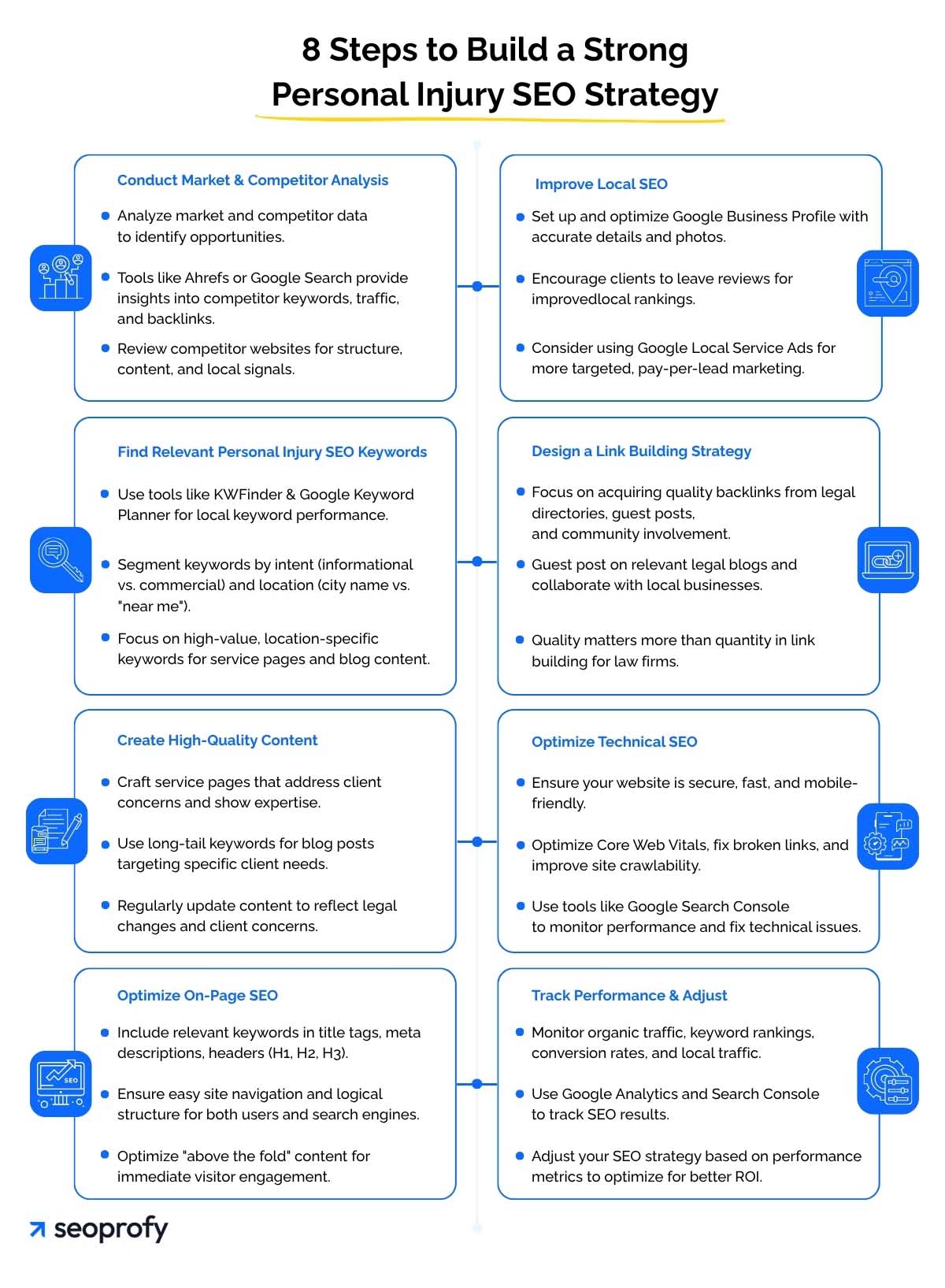
1. Conduct a Detailed Market and Competitor Analysis
Before you do anything else, the first step is to analyze what you’re up against in the market. This gives you two things. First, it shows you how your firm fits into the current landscape. Second, it gives you real data on what keywords your competitors rank for, how their sites are structured, and what kinds of backlinks are pointing to those pages.
Whenever we take on a new client for our personal injury lawyer SEO services, we run this kind of analysis through SearchAnalytics, our internal tool. It tracks more than 300 data points and lets us break down competitors at a very detailed level. This is how our keywords dashboard looks:
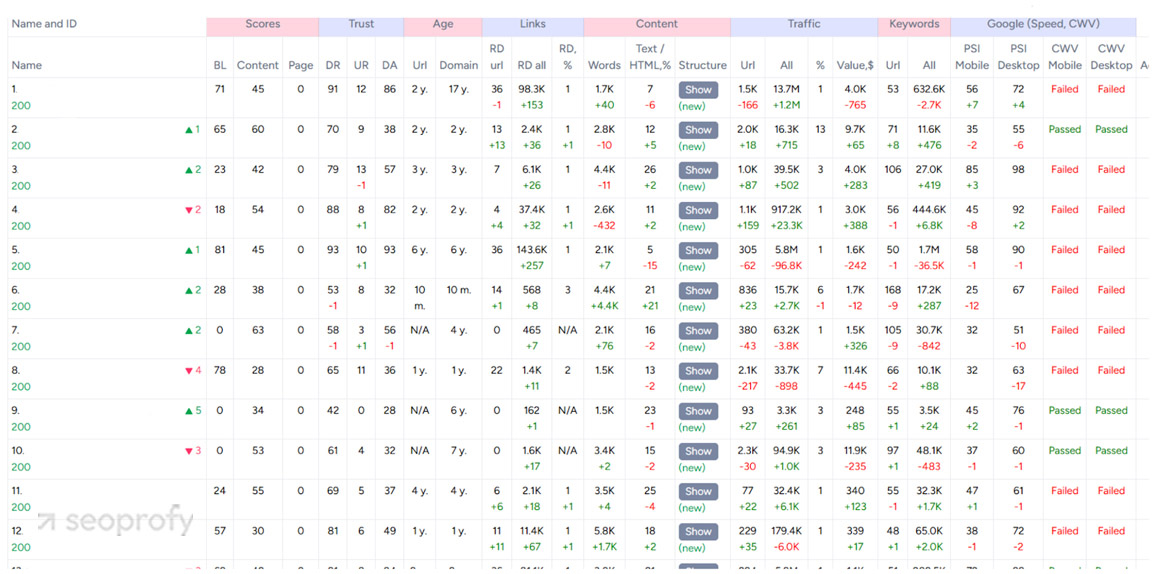
Another helpful feature we use in SearchAnalytics is a competitor dashboard. It shows us the traffic analysis of the competitors as well as the percentage of how many visitors each marketing channel brings them. This gives us a more rounded overview of their digital marketing efforts.
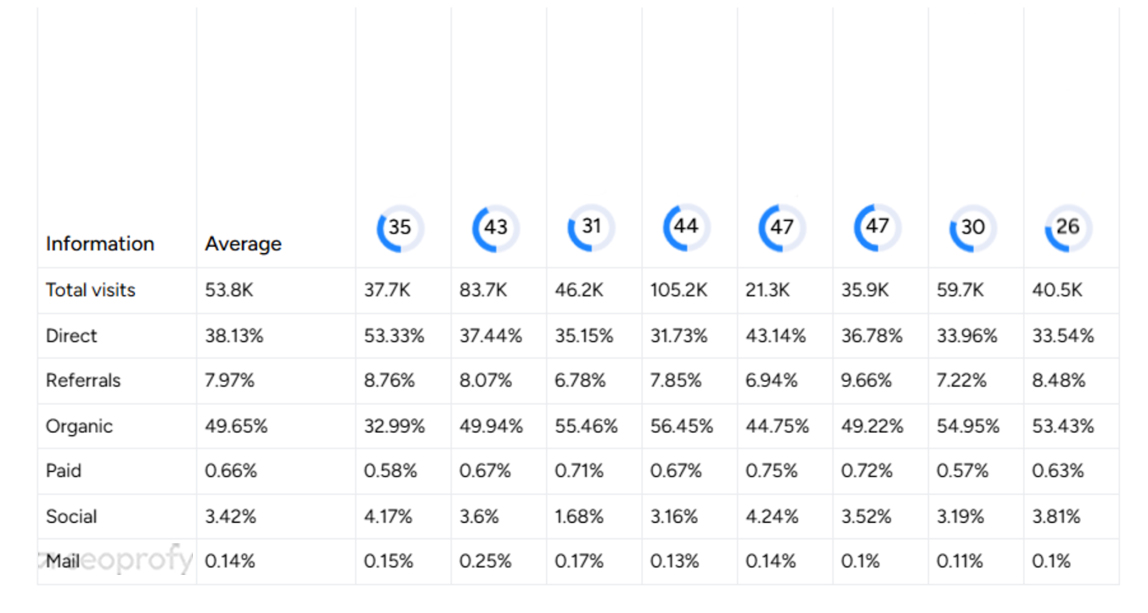
Of course, you don’t need our tool to run a similar check. You can use Ahrefs or any other SEO tool that you trust to analyze your competition. One way to do it is to add your competitor’s domains (the law firms in your area) and scan their top pages. You’ll see which pages drive the most traffic and what websites link to them.
If you don’t have access to SEO tools, you can still get some data by searching manually. Choose a relevant search term and type it into Google in the incognito tab. Look at the first few firms that appear in both the local pack and organic results and take the time to study their websites.
You can then put all the findings in a simple document and use this data to develop an SEO strategy. Add relevant keywords that your competitors target and note any mentions of awards, reviews, or testimonials. As you review the sites that are already ranking, you’ll start to see what kind of content structure and local signals Google seems to prioritize in your city.
With our internal tools, you get access to the software that gives you a bird’s-eye view of competitors’ performance. You’ll be able to see data on:
- The terms they rank for locally
- Pages that drive most of their traffic
- Gaps in content and structure

2. Find Relevant Personal Injury SEO Keywords
Now that you have your competitors’ data, the next step is to come up with a keyword strategy. Although you can use the same software from the previous step, we recommend switching to keyword research tools that show more local data, like KWFinder and Google Keyword Planner.
In KWFinder, you can see the local search performance for each of your main terms. This is especially useful if your practice serves multiple locations. Take the term “car accident lawyer” as an example. In Orlando, this query gets around 1,200 searches a month and has a fairly low keyword difficulty of 23.
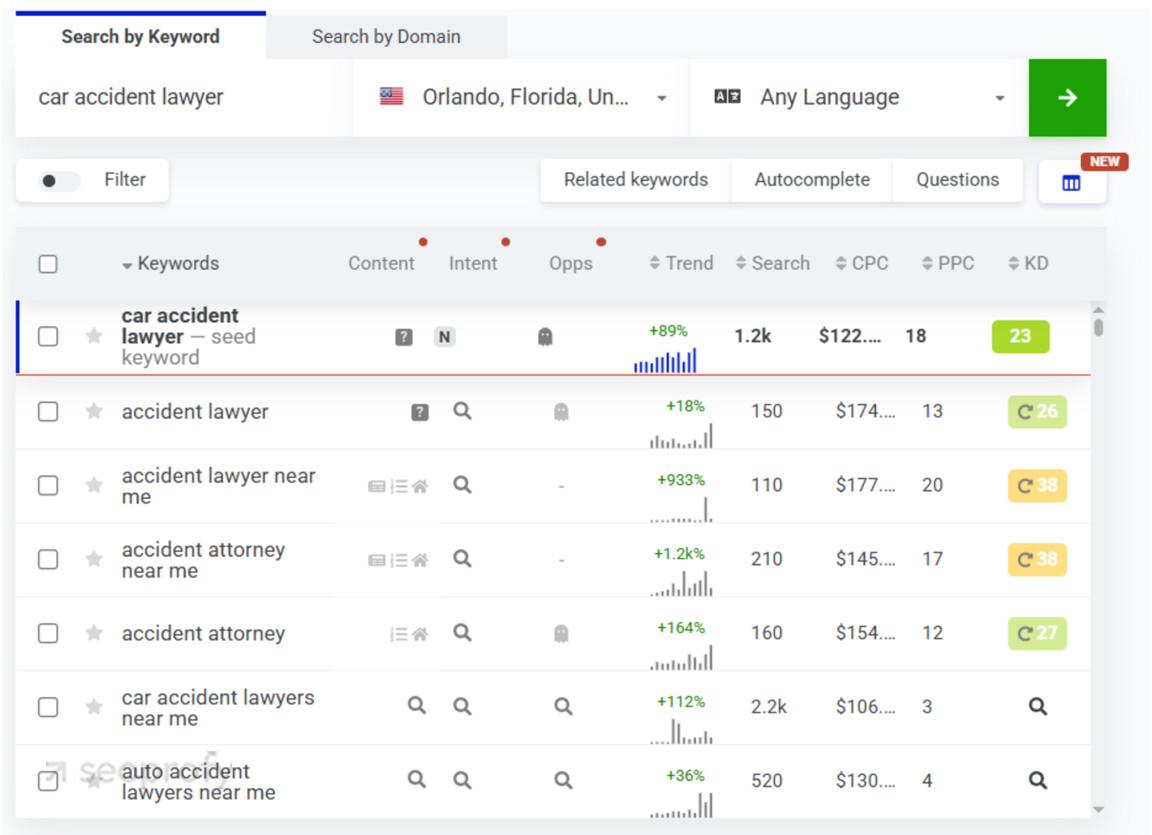
If we check the same keyword in New York, we can see that the search data looks drastically different. The volume of traffic is 14,700, and the keyword difficulty is 36.
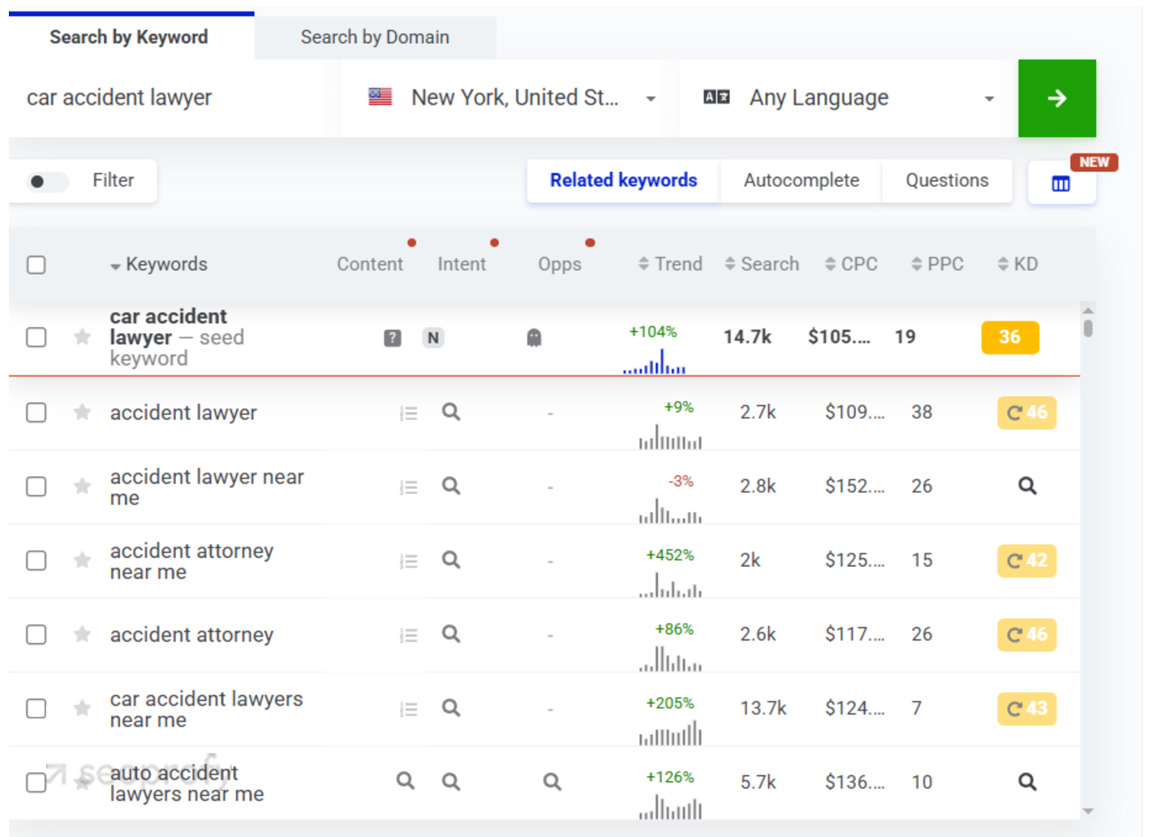
It’s easy to see that in New York, the query has a higher search volume and stronger competition. That means your SEO strategy for personal injury lawyers would require more effort to rank there compared to a market like Orlando.
As for the Google Keyword Planner, it shows a slightly different angle. It’s helpful when you’re trying to find related terms for your PI lawyer SEO or see how a topic behaves over time. It also picks up on longer-tail variations, which might not show up in other tools but often have stronger (commercial) intent behind them.
In our keyword research services, we usually take the data from both tools and add it to a simple keyword mapping sheet. Here, we write down the search volume and KD of each.
50 Personal Injury Keywords for SEO:
| Keyword | Difficulty | Monthly Search Volume |
| car accident lawyer | 31 | 82000 |
| personal injury lawyer | 33 | 79000 |
| truck accident lawyer | 14 | 46000 |
| motorcycle accident lawyer | 3 | 40000 |
| injury lawyer | 68 | 34000 |
| personal injury lawyer near me | 12 | 31000 |
| accident lawyer | 28 | 31000 |
| wrongful death lawyer | 8 | 28000 |
| slip and fall lawyer | 5 | 25000 |
| dog bite lawyer | 0 | 22000 |
| medical malpractice lawyer | 0 | 22000 |
| auto accident lawyer | 30 | 22000 |
| car accident lawyer near me | 33 | 21000 |
| personal injury lawyers | 56 | 17000 |
| car accident lawyers | 36 | 17000 |
| bicycle accident lawyer | 13 | 17000 |
| workers compensation lawyer | 9 | 16000 |
| pedestrian accident lawyer | 2 | 15000 |
| car accident lawyer houston | 53 | 13000 |
| medical malpractice lawyers | 8 | 13000 |
| injury lawyers | 68 | 12000 |
| workers comp lawyer | 10 | 11000 |
| truck accident lawyers | 38 | 9800 |
| accident lawyers | 17 | 9200 |
| injury lawyer near me | 18 | 9000 |
| accident lawyer near me | 28 | 8900 |
| slip and fall lawyers | 4 | 8800 |
| motorcycle accident lawyers | 8 | 8200 |
| birth injury lawyer | 4 | 7900 |
| brain injury lawyer | 6 | 7600 |
| uber accident lawyer | 1 | 7400 |
| top accident and personal injury lawyers | 41 | 7300 |
| auto injury lawyers | 28 | 7100 |
| lawyers for auto accidents | 20 | 6900 |
| car accident lawyers near me | 3 | 6800 |
| accident injury lawyers | 66 | 6700 |
| best car accident lawyer near me | 16 | 6300 |
| truck accident lawyer near me | 21 | 6200 |
| medical malpractice lawyer near me | 0 | 6200 |
| accident lawyers near me | 31 | 5500 |
| lyft accident lawyer | 3 | 5500 |
| lawyers for car accidents | 29 | 5400 |
| work accident lawyer | 1 | 5300 |
| auto accident lawyers | 30 | 5300 |
| slip and fall lawyer near me | 0 | 5200 |
| workers comp lawyer near me | 8 | 5100 |
| auto accidents lawyers | 31 | 5000 |
| workers compensation lawyers | 15 | 5000 |
| catastrophic injury lawyer | 0 | 5000 |
| motorcycle accident lawyers near me | 2 | 4900 |
You could go even more detailed here and group the terms by intent (informational vs commercial), location modifier (city name vs “near me”), and case type. This kind of breakdown is a practical step in SEO for personal injury attorneys, as it helps you understand what content to create for each of the terms.
For example, commercial intent keywords with location modifiers are perfect for optimizing your service pages and local citations. Informational keywords, on the other hand, are great for blog posts and guides that build authority and help with internal linking.
3. Create High-Quality Content for Lawyers
The next logical step in your search engine optimization strategy is legal content writing. We touched on it a bit in the previous section, so let’s now go more into detail.
As a personal injury attorney, your website is the place where potential clients look for answers and a bit of reassurance. So your job is to write content that demonstrates expertise, builds trust, and guides visitors naturally through their decision-making process.
You can start with your main service pages. They’re a core part of SEO for lawyers and should show the types of cases you handle, like car accidents, slip and falls, or medical malpractice.
When you’re working on them, use keywords from the previous step naturally. At the same time, explain to visitors the process, timelines, and what working with you looks like.
Here’s a good example from Abels & Annes. Their page walks visitors through the kind of evidence they collect and what clients can expect after hiring them.
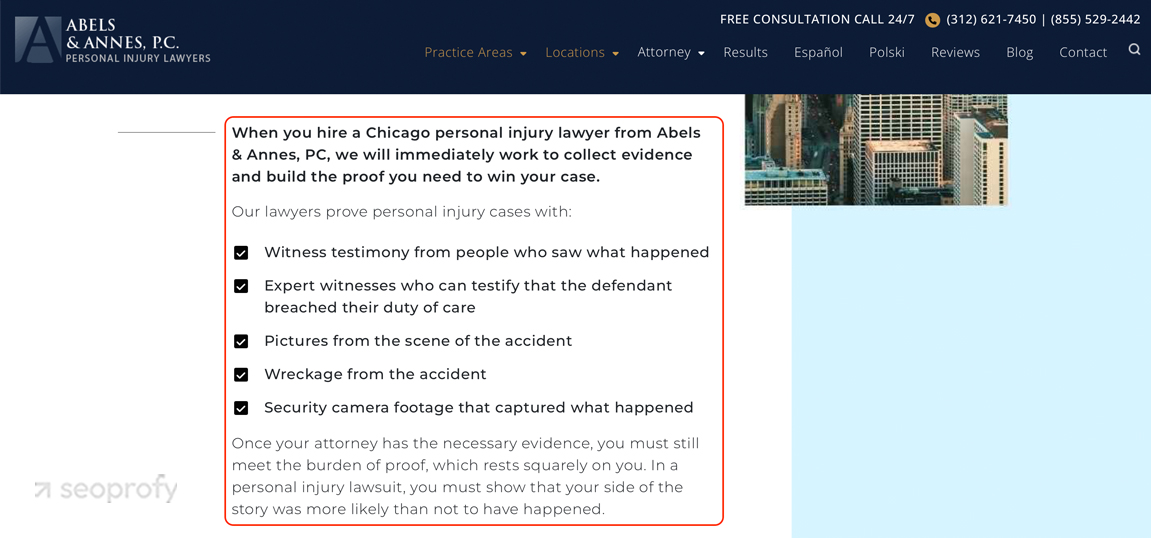
Beyond service pages, blog posts are a great way to reach people who aren’t ready to call just yet but want to learn more. Remember the keyword mapping from the last step? Use it to guide your content marketing strategy and address common client concerns and informational queries.
Don’t overlook the power of long-tail keywords here. These often have lower competition and higher intent, which makes them perfect for blogging that targets very specific client needs.
As for the other top SEO practices regarding content, we recommend that you keep it up to date. Regularly review your pages and make sure they show changes in law, new case precedents, or client concerns. Search engines favor fresh content and rank it better in the search results.
We’ve also noticed that some firms use AI content for SEO, and while it has its merits, Google has become even more attentive to the quality of what’s on your site. So if you’re using AI tools to support your writing, treat them as a starting point. You still need to add your expertise, real examples, and insights that show you understand what your audience is going through.
4. Optimize On-Page SEO for Injury Attorneys
On-page SEO is where you take all the research and planning you’ve done so far and put it to work directly on your site. Let’s start with the basics to help Google and potential personal injury clients find you.
- Title tags and meta descriptions. Each of your pages should have a unique title that describes what it’s about and use your main keyword. As for meta descriptions, they should sum up the page and encourage readers to click on your site.
- Headers (H1, H2, H3). These help organize your content for better scanability and give more context to Google. For this reason, your H1 should match the main topic and include your target keyword. To break sections and work in related terms, you could also use H2s and H3s.
- Site structure and navigation. Every page on your practice’s site should be easy to reach from the main menu, and visitors shouldn’t have to dig to find important information. The overall navigation needs to be logical, not only for the users but for search engine bots too, as they use it to crawl your site.
And of course, don’t forget about the above-the-fold content. In search engine optimization for personal injury lawyers, this section can make or break a visitor’s decision to stay.
It should have a clear headline (with your main keyword), a quick summary of your services, and a way to get in touch. You could also add reviews, recognitions, and a simple contact form, just like on the Thomson Law website.
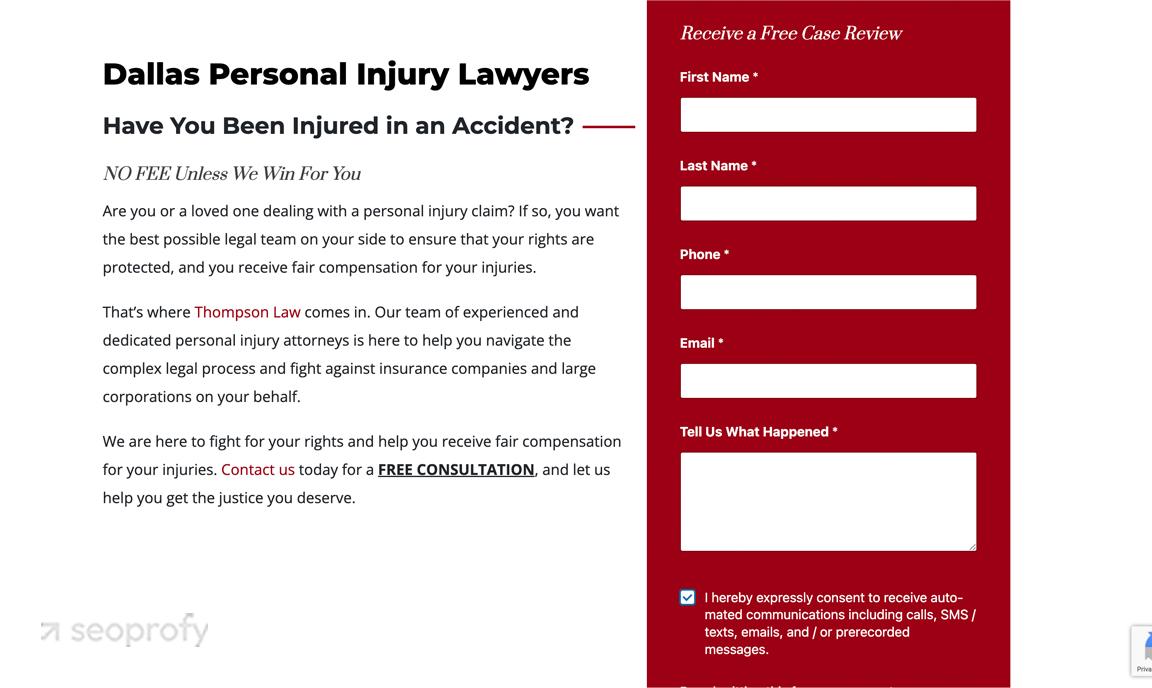
In case your practice has offices in different locations, we also recommend creating dedicated pages for each one. Use local keywords and include your address and phone number to capture more website traffic and get more ROI from your personal injury SEO efforts. We’ll talk even more about local SEO tactics in the next section.
5. Improve Local SEO for Better Visibility
No personal injury marketing strategy can succeed without local SEO for lawyers. That’s because the moment someone gets hurt in your city, they don’t just search for a “personal injury lawyer”. They look for a “personal injury lawyer near me” or “Miami car accident attorney.”
These local searches make up the majority of commercial intent queries. Google knows it, which is why nearly 80% of top results on the first page are Google Maps listings or local business profiles.
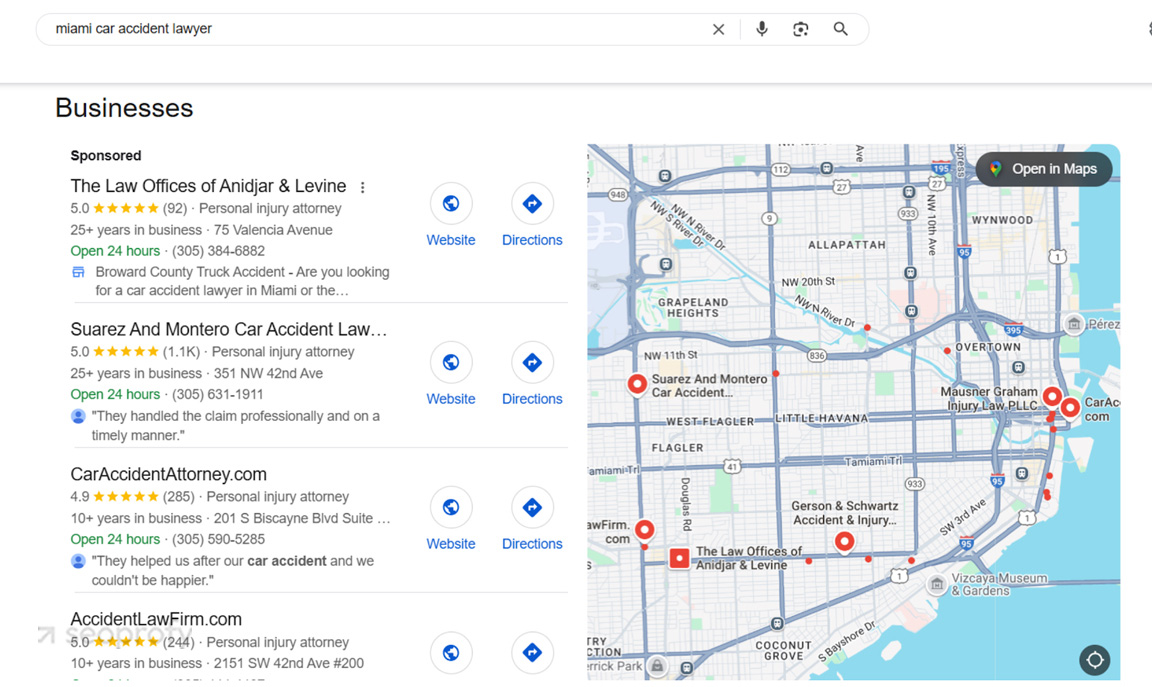
The data shows that ranking in local packs can lead to a 400% rise in views and a 113% increase in clicks. This means that local SEO for personal injury lawyers is one of the major drivers of qualified traffic and clients.
The main component of local optimization is the Google Business Profile. This is the first thing potential local clients see online, and your job is to give them all the information they need, so they choose you over competitors. Here’s what you can do:
- Add all the possible business information to your profile (address, phone number, hours, and services) and keep it up-to-date.
- Choose your categories. “Personal injury attorney” should be your main category. If you also take on specific case types like wrongful death, add those as secondary categories.
- Add photos of your office exterior and your team (even if it’s just you). These images help people feel like they already know you before they call.
- Ask happy clients to leave a review as soon as their case wraps up. A high number of 5-star reviews (especially recent ones) can push your profile up in rankings and help people trust you faster.
If you’re in the U.S. or Canada, Google’s Local Service Ads can help you get personal injury clients fast. They appear above regular search results and connect you with people who are actively seeking legal assistance.
The best part? They’re pay-per-lead, not pay-per-click, so you only pay for real inquiries. Still, you’ll need to pass a background check and submit your business documents to qualify.
6. Design a Link Building Strategy for Personal Injury SEO
Link building for lawyers is an important part of every SEO strategy and even more so in the competitive personal injury industry. Google still considers these one of the main ranking signals, so the more trustworthy sites link to you, the better your chances of higher rankings in search engine results pages.
If we look at the SERP overviews for the keyword “Miami car accident lawyer“, you’ll see that websites that show up for this term all have a strong backlink strategy.
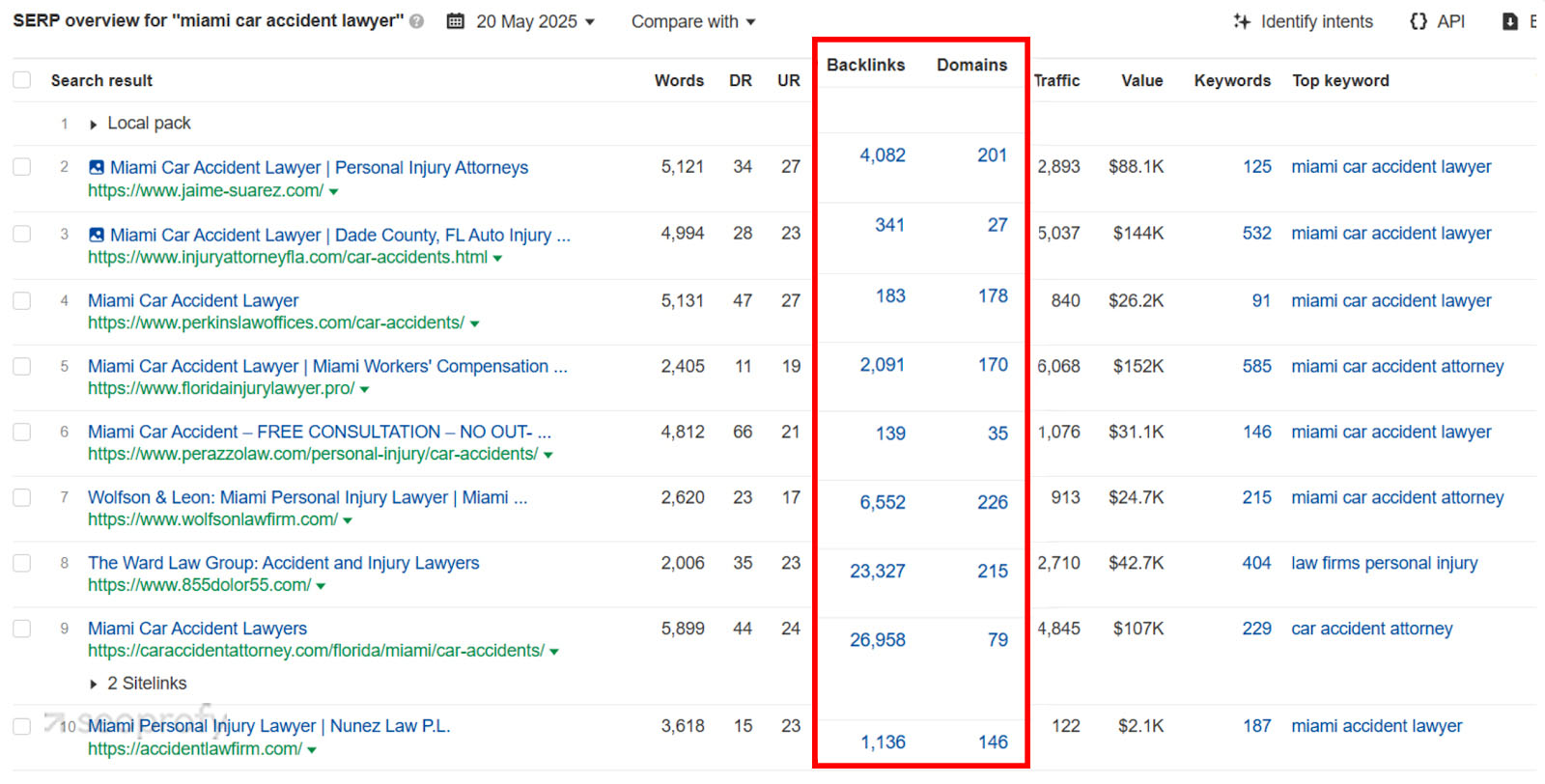
The same pattern shows up in New York. Every law firm ranking in the top 10 has steady, positive backlink dynamics.
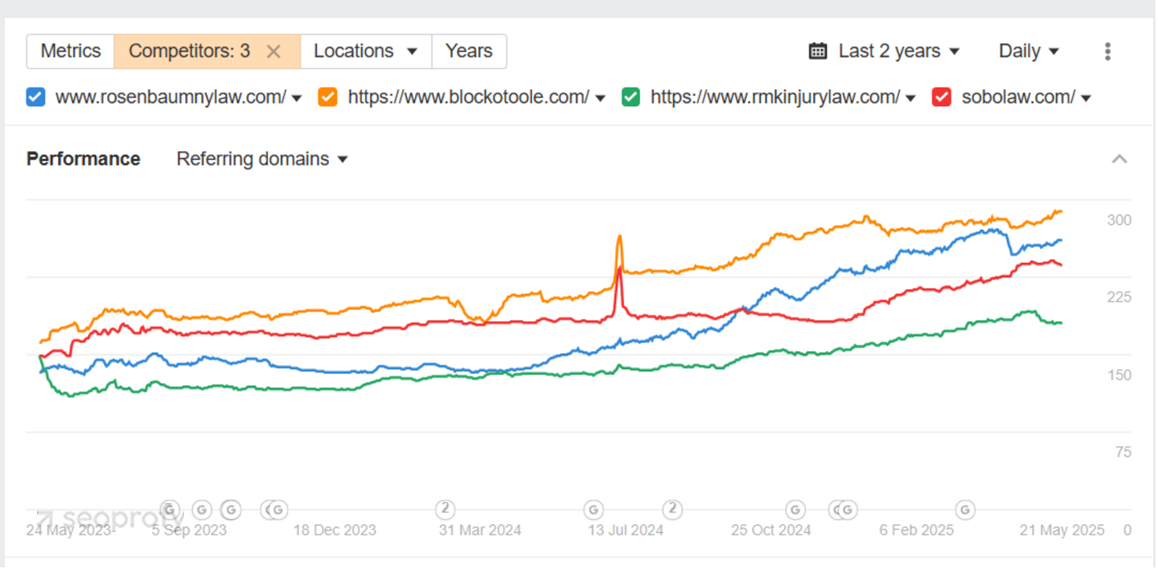
Since backlinks directly influence your search engine rankings and organic traffic, we’ll list a couple of ways you could get mentions from relevant sources. Some involve self-publishing, whereas others might require more effort on your side. Below are a few that work well in SEO for personal injury law:
- Self-publishing: Big legal directories, such as Avvo, Justia, FindLaw, and Martindale-Hubbell, are trusted by Google and often show up high in search results. So, try to get listed there and fill out your profiles completely with the same business info you use everywhere.
- Guest posting and collaborations: Guest articles for respected legal blogs, bar association websites, or local business publications are another way to reach your target audience and earn quality links. It’s also a common tactic we use in our link building services for lawyers.
- Community involvement: A lesser-known but still effective strategy to get mentions is to sponsor or participate in local events or support nonprofits. These websites often show your name on their site and link to your law firm.
- Social media: A consistent presence on platforms like LinkedIn, Facebook, or Twitter can also extend the reach of your content. When you post about your legal expertise and share insights that add value, your content may be picked up by legal blogs or industry publications, which can lead to natural backlinks.
Our advice is to pay attention to the quality of your links rather than the quantity. In legal SEO, the most valuable links are the ones that make sense for your practice and your location.
Listings in recognized legal directories, mentions from bar associations, and features in local publications all send the right signals to Google. Over time, these efforts build the kind of authority that moves keyword rankings and keeps them there.
7. Optimize Technical SEO for Law Firm Websites
Your performance and online visibility also depend on how technically sound your site is. We’re talking about your site speed, mobile usability, and how Google crawls and indexes your pages. The main areas you need to keep in check are:
- Site security
- Core Web Vitals
- Mobile optimization
- Crawlability and indexing
- Structured data
There are multiple tools that can help you optimize your personal injury lawyer website and find potential issues. PageSpeed Insights gives you a breakdown of what’s slowing you down. Screaming Frog (free for up to 500 URLs) helps you catch broken links, missing titles, and redirect chains. And Google Search Console shows which pages are indexed and flags technical problems like crawl errors or blocked resources.
In most cases, this is the part that law firms hand off to us. So, if you don’t have someone on your team who can fix these things, our law firm SEO audit helps reveal technical issues that affect your performance, and you get a detailed report with what to fix, step by step.
8. Track Performance and Adjust Your Personal Injury Lawyer SEO Strategy
After your SEO strategy goes live, your job isn’t over. You still need to track how it performs in Google search and adjust it based on what the data tells you. Although the metrics you’ll track depend on your SEO goals, here are the most common ones we recommend monitoring in legal marketing:
- Organic traffic: Check how many users visit your site from unpaid search results and which pages tend to attract the most leads.
- Keyword rankings: Monitor where your pages appear in Google for relevant search terms.
- Conversion rate: Measure how many people take action after landing on your site, such as submitting a consultation form.
- Local traffic from Google Business Profile: Review clicks, calls, and direction requests that come from your GBP listing.
At our personal injury SEO company, we pull these metrics from Google Analytics, Search Console, and our internal dashboards. These numbers show us which pages attract visitors and, more importantly, what kind of SEO ROI you get from your efforts.
Overall, these performance checks don’t take long, but they reveal a lot. Use this data to improve SEO on your site and achieve even better results from your efforts.
Amplify Your Personal Injury Lawyer SEO with SeoProfy
As a personal injury law firm, you already know that the market isn’t easy. It’s competitive, expensive, and unforgiving if you’re invisible in search.
To compete, it’s best to partner with a law firm SEO agency that has both the expertise and proven results in your field. At SeoProfy, we work with personal injury practices every day. We know what your clients search for and have seen what it takes to rank in markets like Miami, Chicago, and LA.
If you’re serious about growing your caseload and want an expert team on your side, get in touch. We design custom local SEO strategies built to match the way legal prospects behave online, so you get more qualified leads and booked appointments.

